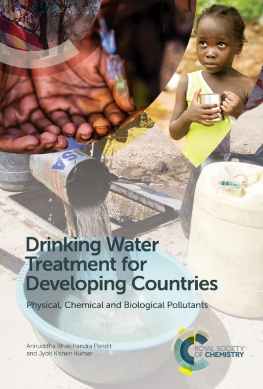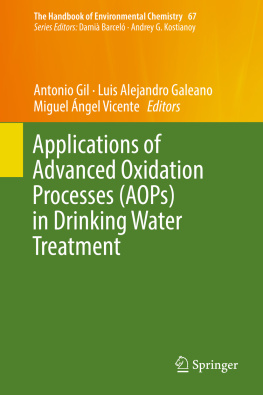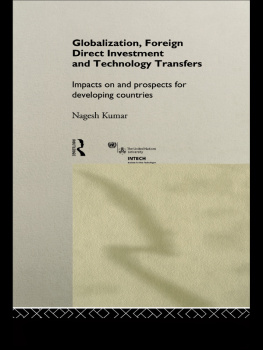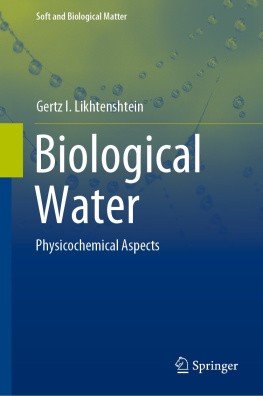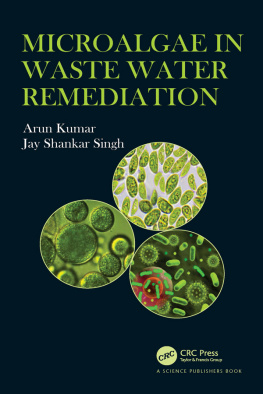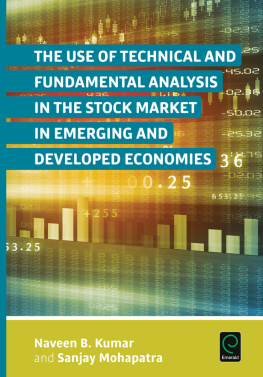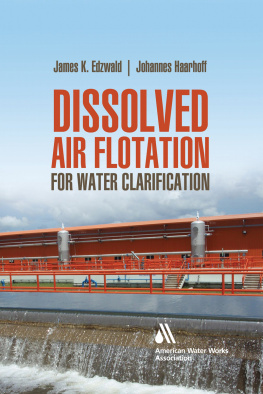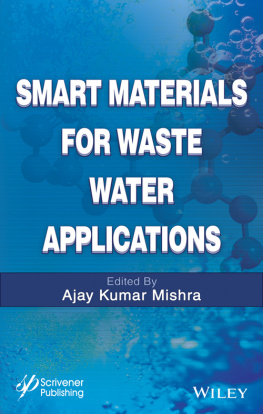Jyoti Kishen Kumar - Drinking water treatment for developing countries physical, chemical and biological pollutants
Here you can read online Jyoti Kishen Kumar - Drinking water treatment for developing countries physical, chemical and biological pollutants full text of the book (entire story) in english for free. Download pdf and epub, get meaning, cover and reviews about this ebook. year: 2019, genre: Romance novel. Description of the work, (preface) as well as reviews are available. Best literature library LitArk.com created for fans of good reading and offers a wide selection of genres:
Romance novel
Science fiction
Adventure
Detective
Science
History
Home and family
Prose
Art
Politics
Computer
Non-fiction
Religion
Business
Children
Humor
Choose a favorite category and find really read worthwhile books. Enjoy immersion in the world of imagination, feel the emotions of the characters or learn something new for yourself, make an fascinating discovery.
- Book:Drinking water treatment for developing countries physical, chemical and biological pollutants
- Author:
- Genre:
- Year:2019
- Rating:3 / 5
- Favourites:Add to favourites
- Your mark:
- 60
- 1
- 2
- 3
- 4
- 5
Drinking water treatment for developing countries physical, chemical and biological pollutants: summary, description and annotation
We offer to read an annotation, description, summary or preface (depends on what the author of the book "Drinking water treatment for developing countries physical, chemical and biological pollutants" wrote himself). If you haven't found the necessary information about the book — write in the comments, we will try to find it.
Jyoti Kishen Kumar: author's other books
Who wrote Drinking water treatment for developing countries physical, chemical and biological pollutants? Find out the surname, the name of the author of the book and a list of all author's works by series.
Drinking water treatment for developing countries physical, chemical and biological pollutants — read online for free the complete book (whole text) full work
Below is the text of the book, divided by pages. System saving the place of the last page read, allows you to conveniently read the book "Drinking water treatment for developing countries physical, chemical and biological pollutants" online for free, without having to search again every time where you left off. Put a bookmark, and you can go to the page where you finished reading at any time.
Font size:
Interval:
Bookmark:
Chapter 1
Introduction
Drinking water or potable water is water that is clean, safe and free from any physical, chemical or biological pollutants. Water is a natural resource and is available freely as almost 70% of earths surface is filled with water. Therefore, it can be said that drinking water availability is a human birthright. It is indeed fascinating to note that the water that we drink today has always been around in some form or another as it is recycled in the atmosphere and in our glass, which holds water. However, it must be noted that only 2.5% of the global water is freshwater and the remaining part accounts for saline water and the oceans. From this 2.5%, only about 1% is reported to be accessible while the remainder is locked in the form of glaciers and snow.
Overall, experts state that only around 0.007% of the earths water is available for human consumption. This amount is not sufficient to cater to the needs of the ever-increasing population on our planet. As per the statistics reported by the United Nations, the current world population is almost 7.6 billion and the birth rate is 4.3 every second. The population is expected to reach 8.6 billion by 2030, 9.8 billion in 2050 and almost 11.2 billion in the year 2100. Therefore, it can be clearly seen that the existing water resource will not be able to meet the augmenting water demands of the growing global population. It is important to note that freshwater availability is not globally well distributed due to differences in geographies, climate and environmental factors, industrialization and an upsurge in human activities.
Most of the developing countries face a major shortage of fresh water and in some instances, even if water is available, it may not be safe for human consumption and may also entail long hours of commuting to fetch it from the source. Water is very essential to sustain life and the human body is made up of 70% water. Apart from drinking, water is also needed for basic needs such as bathing, cooking and other domestic chores. According to the United Nations, the water usage rate has increased to more than twice the rate of population growth in the last century. It is very distressing to note that by the year 2025, around 1.8 billion people will be living in water scarce regions and almost two-thirds of the worlds population will be living in water strained zones mainly due to uncontrolled and extensive water usage, growth and environmental changes.
Global water regulating bodies such as the United Nations, WHO and institutions working on water quality and health such as UNICEF and many other national and local bodies have been performing a herculean task of monitoring water quality, charting guidelines and organizing programs for public awareness and safety. Over the last several decades, the world has witnessed tremendous progress in water quality management and many goals laid down by the WHO and the UN from time to time like the Millennium Development Goals (MDGs) have been successfully met.
It is very heartening to note that in the year 2015, 71% of the global population (2.6 billion) had been using a safely managed drinking water service since 1990. This implies that they used a water source that was located on the premises and that this source was freely available and free from contamination. This is indeed a huge milestone as the proportion of the global population using an improved drinking water source between 1990 and 2015 has increased from 76% to 91%. Moreover, 89% of the global population used at least a basic service, which is an improved drinking water source that is close to the premise and generally requires a round commuting trip of less than 30 mins.
Although this is a positive result, there are still many milestones to be achieved as the remaining population (663 million) still lack even a basic drinking water service and it is reported that globally at least 2 billion people use a drinking water source that may be contaminated with feces. This is very alarming since the consumption of contaminated water can result in many water borne diseases such as cholera, diarrhea, typhoid and dysentery. It is reported that each day nearly 1000 children die due to preventable water and sanitation related diarrheal diseases. Therefore, after the MDGs, the UN drafted the Sustainable Developmental Goals (SDGs) that cover a set of 17 different objectives and are mainly considered a universal call to action to end poverty, and to protect and ensure that all people enjoy peace and prosperity.
These 17 goals built on the successes of the MDGs and include new areas such as climate change, innovation, sustainable consumption etc. Interestingly, the goals are interconnected and solving one goal will often involve tackling issues related to the other. Goal 6 is clean water and sanitation and the salient points related to clean water are that by 2030, universal and equitable access to safe and affordable drinking water should be available for all and by 2030, water quality should be improved by reducing pollution, minimizing the release of hazardous chemicals, having a proportion of untreated waste water and substantially increasing recycling and safe reuse globally. Most importantly, one of the main goals is to expand international cooperation and capacity building support to developing countries in water related activities and programmes including water harvesting, desalination, water efficiency, waste water treatment, recycling and reuse technologies.
In this book, an attempt has been made to discuss these technologies with respect to their application in developing countries. Yet another global monitoring body is the WHO and UNICEF joint monitoring Programme for water supply, sanitation and hygiene (JMP), which has produced regular reports on the progress of the work related to goal 6, on drinking water, sanitation and hygiene, since 1990. JMP has developed a global database and was responsible for monitoring the progress of the 2015 MDG. It has now been entrusted with the responsibility of monitoring the progress of the 2030 SDG targets related to drinking water, sanitation and hygiene.
Recently, in 2017, JMP released the first update on the first global baseline estimates for the SDG targets related to drinking water. According to this update, the salient conclusion related to drinking water was that there are many people who still lack access to drinking water, especially in the rural areas. Although there are billions of people who have had access to a basic drinking water facility since 2000, these facilities do not provide safe water and the potential risk of consuming contaminated water is significant. Therefore, the risk of contracting water borne diseases is very high, especially among young children who are prone to diseases such as diarrhea, hepatitis, cholera and typhoid.
Yet another key finding in this report is that there are big gaps in services between the urban and rural areas. For instance, it is reported that two out of three people with safe managed drinking water live in urban areas and of the 161 million people who use untreated surface water (from lakes, rivers or irrigation channels), 150 million live in rural areas. This clearly points out that there is a huge requirement to improve access to safe and clean drinking water in the rural regions, which are mainly located in the developing countries across the world. Some of the developing countries are shown in .
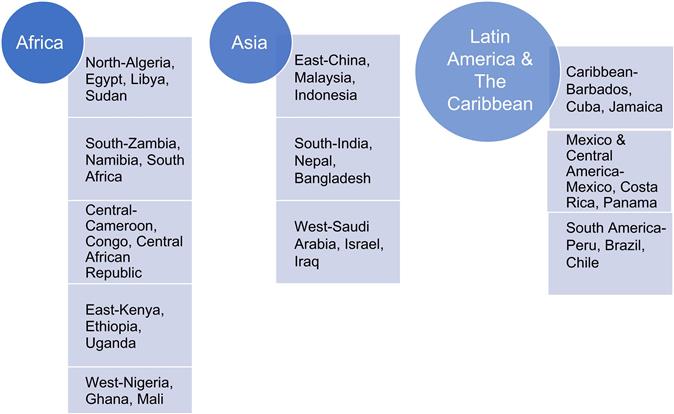
Figure 1.1 Developing Countries (Source: http://www.un.org/en/development/desa/policy/wesp/wesp_current/2014wesp_country_classification.pdf).
Next pageFont size:
Interval:
Bookmark:
Similar books «Drinking water treatment for developing countries physical, chemical and biological pollutants»
Look at similar books to Drinking water treatment for developing countries physical, chemical and biological pollutants. We have selected literature similar in name and meaning in the hope of providing readers with more options to find new, interesting, not yet read works.
Discussion, reviews of the book Drinking water treatment for developing countries physical, chemical and biological pollutants and just readers' own opinions. Leave your comments, write what you think about the work, its meaning or the main characters. Specify what exactly you liked and what you didn't like, and why you think so.

